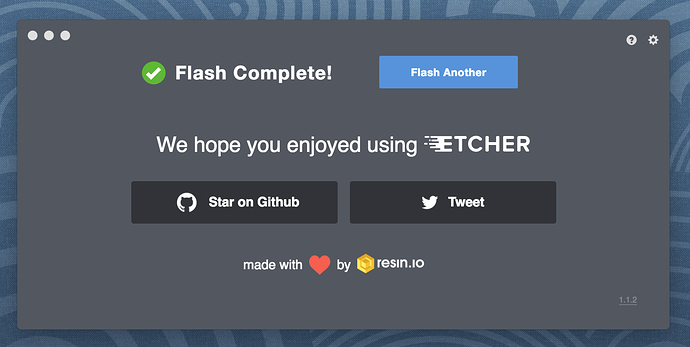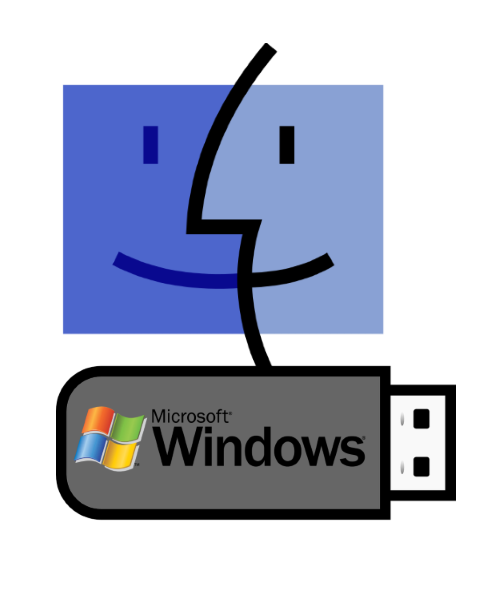Feb 01, 2016 We'll show you to create a bootable USB flash drive with the Windows 10 installer from a Mac. It's easier than you think, thanks to the built-in Boot Camp Assistant from Apple. Download Windows 10. SurvingFella January 18, 2021 at 5:52 PM Reply. Thanks, yesterday I was able to recover my ‘old’ iMac from Late 2009 to El Capitan (10.11) with a bootable USB stick that I created with the instructions in this article (had to change the system date before installation).
- How To Create A Bootable Usb Stick On Mac
- Create Bootable Usb Stick Macos High Sierra
- Create A Bootable Usb Drive
- Create A Bootable Win7 Usb Stick On Osx
- Creating A Bootable Esxi Usb Stick On Mac Os X
If you did not migrate your account yet, visit https://idp-portal-info.suse.com/
Tested on openSUSE

Recommended articles
Related articles
- 1Requirements
- 2Create bootable USB stick
Requirements
Download installation images
You need to download a DVD or Network installation image (ISO file) before creating the installation USB stick.
See Portal:Installation.
How To Create A Bootable Usb Stick On Mac
A large capacity USB stick
To write DVD images, your USB stick must have at least 5 GB storage space.
To write Network images, your USB stick must have at least 100 MB storage space.
NOTE: All data in the USB stick will be erased! Backup all contents before writing the images.
A working PC
You need a working PC to run the bootable USB creation tool. ImageWriter can be run on openSUSE. UNetbootin can be run on other Linux distributions, Microsoft Windows and Apple macOS.

Create bootable USB stick
Imagewriter (openSUSE)
- Open YaST --> Software Management
- Search and install 'imagewriter' package
- Open 'SUSE Studio Imagewriter'
- Select downloaded image (*.iso file)
- Select the USB device
- Click 'Write' button
It takes several minutes or longer, depending on image size and hardware performance.
Done!
Universal USB Installer (Windows)
Note: Universal USB Installer only supports ISO files up to a maximum size of 4 GiB, which can be exceeded by some openSUSE DVD images. In this case, use UNetbootin for Windows as described below.

Create Bootable Usb Stick Macos High Sierra
- Download Universal USB Installer (GPLv2)
- Run it. You will see a simple application window.
- Select Linux distribution 'openSUSE'.
- Select downloaded image.
- Select the USB device.
- Click 'Create' button.
It takes several minutes or longer, depending on image size and hardware performance.
Done!
Create A Bootable Usb Drive
UNetbootin (OpenSUSE)
- Install unetbootin via zypper
- Figure out which drive is your USB stick you wish to overwrite
- Wipe out the partition table of your USB stick to avoid issues with existing contents
- select /dev/sdc ( if your usb stick is /dev/sdc )
- p ( to print existing partitions )
- rm 1 ( to remove first partition )
- mklabel gpt ( to wipe device and make it GPT )
- mkpart primary ext4 1 -1 ( fill entire USB drive with ext4 partition )
- set 1 boot on ( make the new partition bootable )
- quit
- Unplug and replug the USB stick to have OpenSUSE automount /dev/sdc1
- Run unetbootin with environment variable to avoid UI bug
- Select radio button
- Click ... and open previously downloaded iso file
- Select Type: is not already selected
- Select Drive: if not already selected
- Click OK
- Exit unetbootin
- Eject the USB drive from UI, or run
- to umount files
UNetbootin (Other Linux, Windows, Mac)

- Download UNetbootin (GPLv2)
- Run it
- Select 'Diskimage' radio button
- Select 'ISO' file type
- Click {{Key| ... } and open previously downloaded *.iso file
- Select device Type: 'USB Drive'
- Select Drive: 'Letter/Name of your USB stick' if not already selected
- Click OK
It takes several minutes or longer, depending on image size and hardware performance.
Done!
Create A Bootable Win7 Usb Stick On Osx
Boot from USB stick
- Plug your the USB stick into computer.
- Boot or reboot system.
- Press F12 and enter boot menu when you see BIOS interface. Quickly! (Some computers use Esc, F8, F10 for boot menu, you should see it on BIOS screen)
- Select your USB stick in the boot menu
- Press Enter
Creating A Bootable Esxi Usb Stick On Mac Os X
System will restart and boot from the USB stick. Then you can follow the normal DVD installation instructions.
